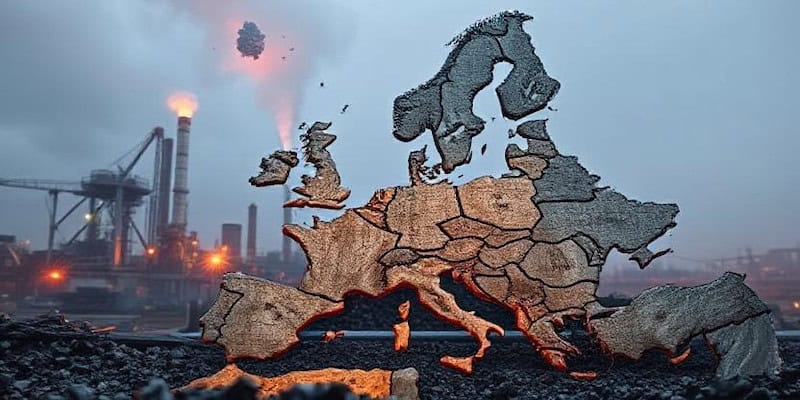For those companies eyeing or already engaged in exports to the EU, understanding the implications of the EU’s Carbon Border Adjustment Mechanism (“CBAM”) is crucial to doing business in the EU. Over the past few months, I have noticed an increase in questions from several of my clients that export to countries in the European Union (“EU”) seeking clarity on their products’ exposure to the new EU carbon adjustment taxation law upon entry into the EU custom territory. This surge in enquiries stems from their EU-based customers requiring them to provide documentation showing the embedded carbon emissions data of their product as a prerequisite for completing the sale.
This article aims to provide non-EU manufacturers and exporters who are currently exporting to the EU, or who are planning to do so, with useful insights into this new legislation.
What is the CBAM and What Products Are Covered?
CBAM aims to prevent non-EU based companies operating in the EU from relocating their manufacturing operations to regions with lax environmental regulations. By imposing a carbon price on certain imported goods, CBAM aligns production costs with the carbon content of imported items. Though the law became effective in May 2023, its transitional phase began on 1 October 2023 and continues through 1 January 2026. During that transitional phase, importers of an identified class of products into the EU must report the embedded carbon emissions data of the products that they bring into the EU without facing immediate financial obligations. The identified products that are currently covered under CBAM include:
- Certain iron and steel goods;
- Aluminium and goods made of aluminium;
- Iron ore and hydrogen;
- Some fertilizers;
- Electricity; and
- Mineral products (cement).
In the post-transition phase, EU importers must declare the previous year’s import volumes and their associated embedded carbon emissions data or risk financial consequences for non-compliance. Further, the scope of the covered products is expected to broaden during that post-transitional period.
Why US Manufacturers and Exporters Should Care?
CBAM’s impact extends to both EU importers and their foreign suppliers, including US manufacturers and exporters. While importers of these product categories into the EU must report emissions data, their foreign suppliers are required to furnish accurate data on their products to facilitate compliance. This entails providing CBAM certificates and other relevant information to enable precise reporting and border tax calculations. For instance, if a Wisconsin-based manufacturer produces aluminium manhole grates at its foundry and sells them to its Austrian customer, who then imports these items into Austria, the Wisconsin manufacturer must provide data on the embedded carbon emission within the aluminium manhole grates to enable the Austrian importer to meet its reporting and carbon tax requirements mandated by CBAM. The same would hold true if the aluminium manhole grates were sold to an intermediary in the United States who then resells them to its Austrian customers. In this scenario, the Wisconsin manufacturer remains accountable for providing the requisite data. Thus, regardless of how many times the aluminium manhole grates changes hands before they are imported into the EU, the EU importer would need the emissions data that has been provided by the Wisconsin manufacturer to comply with CBAM reporting requirements because that data must originate from the original manufacturer.
Consequences for Non-compliance
For US manufacturers who also import their products into the EU, their failure to comply with CBAM reporting requirements, or their provision of inaccurate reports, or their failure to surrender the necessary CBAM certificates shall result in severe penalties set by each EU member state, with the severity escalating based on the duration of the problem. Even if a US exporter does not import its product into the EU, it will be similarly impacted, as sophisticated importers will likely pass on their cost of non-compliance via contract to their foreign suppliers, indirectly holding them accountable for their CBAM violations. Thus, failure to facilitate compliance may result in penalties for US suppliers or termination of contracts altogether in scenarios where the issues cannot be rectified.
What Should US Manufacturers and Suppliers do to Comply with CBAM
To remain compliant US manufacturers must determine whether their products, or the inputs used to produce their products are cover goods as defined by CBAM. If their products fall within CBAM scope, then they should prepare reports for each product produced describing the embedded carbon content in that product. For example, if the Wisconsin manufacturer only produces raw aluminium, which are covered under CBAM, then it would need to produce a report detailing the carbon emission content of the raw aluminium. On the other hand, if it procures raw aluminium from an original manufacturer in, for example, China and then uses the raw aluminium to produce aluminium manhole grates, then the Wisconsin manufacturer must obtain the carbon emission data of the raw aluminium from its Chinese supplier.
The above obligation equally applies in scenarios where the aluminium manhole grates are sold to another US customer before being subsequently resold to a EU-based customer. Thus, the burden of furnishing CBAM compliant documents persists, whether the Wisconsin manufacturer exports covered raw materials or covered finished goods, even if it does not directly export these items into the EU. This means that the supply and sale contracts between the Wisconsin manufacturer and any of its customers or suppliers need to be updated to include contractual obligations to not only limit its liabilities and indemnities, but also to provide the necessary data to its EU-based customers that shall import the product into the EU. These contracts need to be updated at all levels of the covered item’s supply chain.
Why ComFin Software’s Comcore CTRM Provides Viable Solution to CBAM
CBAM underscores the importance of environmental compliance in international trade. Non-EU based manufacturers and exporters must proactively engage with CBAM requirements to mitigate risks to their business, and to foster sustainable business relationships with their EU customers. Fortunately, that solution can be found in ComFin Software’s Comcore CTRM. Comcore is working to provide a comprehensive digital CBAM data collection and management system that can function as a stand-alone solution or integrate it into existing software infrastructures, such as Oracle, SAP, or Navision. Key features will include gathering of supplier’s data, verifying whether the respective deal is subject to the CBAM, accurate automated embedded emission calculations, reporting, and auditing functionality to ensure compliance. Contact ComFin Software to find out how we can help.
This article was written by International Trade and Customs Lawyer Ngosong Fonkem


